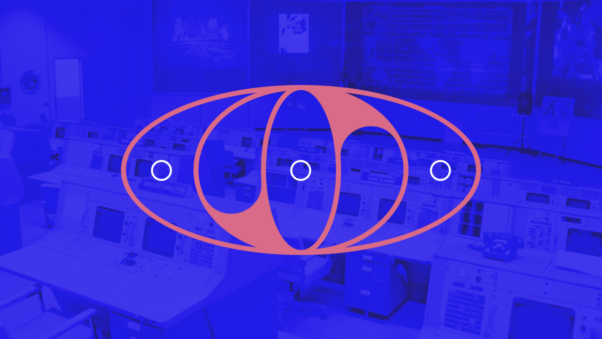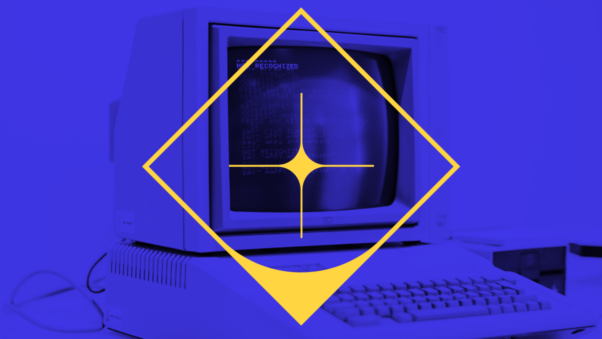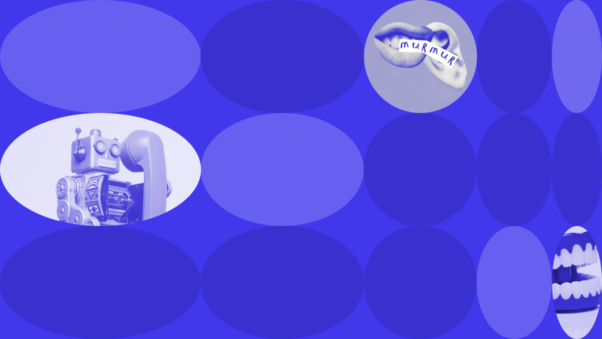Turn Prospects Into Customers by Mapping the Buyer’s Journey

In this article, learn how understanding the buyer’s journey can help you create meaningful and relevant content — and turn prospects into customers.
Buying a product or service is the result of a series of decisions. Even when we buy something that seems obvious or inessential to our lives or business, we still go through a series of moments, choices, and experiences that result in us ending up with something in our possession. Moreover, the process doesn’t stop then. Even if the product is something we consume or use right away—rendering it forever gone—we’re still interacting with it in our minds and experiences after the fact. We have made a connection with a brand. So if that product or service is something that we will continually use, that connection remains direct for the foreseeable future.
In today’s always-on, digital world, it’s more important than ever for brands to understand that their brand story isn’t something they blast out into the world once and hope it resonates. Being a strong brand today is about being relevant to your customers, no matter where they may be. Whether you’re a B2C or B2B company, your customers are right now at some point in the purchasing process. They’re in the midst of the Buyer’s Journey.
When building your brand, it’s crucial to understand your customer’s journey, from being aware of your product or service, to the consideration phase, evaluation, and then, ultimately, the decision to purchase a new product or service — without forgetting what comes after, too. Mapping out that emotional journey, and how to serve your customers for each specific stage, is a crucial step in the crafting of your brand’s story.
First, let’s map out the stages of the Buyer’s Journey.

Awareness
Before a customer even considers whether to buy a product or service, a need for that product or service has developed. And that comes from the perception of a problem that needs to be solved. Our hiring takes too long; my TV is too small, the oven is broken—whatever it is, the buyer becomes aware of a challenge or opportunity they will try to pursue to fix that problem. Customers in the awareness stage are also deciding how to prioritize this challenge. How important is it to them? How quickly do they need to solve the problem? Is there an immediate, pressing need, or can this be put to the side for a little bit while more significant issues are resolved?
The awareness stage is very much like a problem-solving process. This part of the Buyer’s Journey sees the buyer interrogating their situation, often quickly, looking for the best solution. Companies looking to understand how to turn potential customers into buyers should investigate the answers to the following questions:
- How do buyers describe their goals or challenges?
- How do buyers educate themselves on these goals or challenges?
- What are the consequences of inaction by the buyer?
- Are there common misconceptions buyers have about addressing the goal or challenge?
- How do buyers decide whether the goal or challenge should be prioritized?
When building out content for the awareness stage, consider that customers are probably just scratching the surface of your brand and product. Hero images on your website homepage, and other vital pages are essential to grab the customer’s attention. Blog posts and whitepapers can help make people better understand their problem and potential solutions. Effective Awareness content shows the customer that you understand their issue and inspires them to take action to solve it.

Consideration
Now that the buyer has identified a problem, and has committed to finding a solution, the next step is the Consideration phase—where the buyer is determining how to solve their problem. They’re evaluating different approaches, exploring different methods and options. For our purposes, this is essentially the part of the journey where the buyer is deciding whether or not purchasing a product or service is the answer, or if there is another way to solve their specific problem.
The Consideration phase is probably the place that companies most often overlook. It can be easy for a company to fall into the trap of thinking “Customer needs [x], we supply [x]…easy!” However, taking on the buyer’s viewpoint allows you to take a more honest assessment of their situation. It also forces companies to understand that not every buyer is in the same position; addressing the needs of multiple buyer types gives your company the potential to rope in a much broader set of potential customers.
Among the questions companies should ask about buyers in the Consideration phase are:
- What categories of solutions do buyers investigate?
- How do buyers educate themselves on the various categories?
- How do buyers perceive the pros and cons of each category?
- How do buyers decide which category is right for them?
Content for the Consideration phase starts to place your products and services at the center, concentrating on how they are relevant to the customer’s problems. These could be product descriptions or a list of technical specifications. Testimonials can be quite useful too—highlighting happy customers who had similar difficulties than your prospective customers and found a solution with your product. Longer form content like blog posts, white papers, and case studies can also be effective. The key is to illustrate that your company can solve the customer’s problem by showing that you have a strong history of doing so for others.
When a potential customer has fully considered their options, they’re ready to move onto the next phase: making the actual purchase. When a company has served that potential customer well, they’ve put themselves in the position to turn that person into a buyer. The magic happens in the final stage.

Decision
Whether the potential customer is a consumer or an executive, they eventually reach the final stage of the Buyer’s Journey. This is where they ultimately make their decision—which service or product they are going to buy. As with the prior stages of the Buyer’s Journey, companies need to plant themselves in the shoes of the customer firmly. Understanding what has brought the customer to this stage is key in determining what messaging and targeting will effectively play into their ultimate call on which product or service to buy, and which to spurn.
Every time we shop, we’re doing all sorts of comparisons and cost-benefit analyses in our heads. We ask ourselves a series of questions to determine which product is best for us. Companies marketing to folks in the Decision phase should investigate the answers to these following questions:
- What criteria do buyers use to evaluate the available offerings?
- When buyers investigate your company’s offering, what do they like about it compared to alternatives? What concerns do they have with your offering?
- Who needs to be involved in the decision? For each person involved, how does their perspective on the decision differ?
- Do buyers have expectations around trying the offering before they purchase it?
- Outside of purchasing, do buyers need to make additional preparations, such as implementation plans or training strategies?
In a B2B setting, the decision phase may entail some additional thought processes. The decision-maker is likely an executive of some sort, who isn’t just interested in how a product or service will operationally work, but how it will affect the brand and company on the whole.
They need proof that the product provides top tier value and the protection for the brand. They need assurance that they’re going to have account service. They need evidence that they’re going to get operational efficiency.
Either way, it’s critical to know what are your customers’ most pressing needs, what pain points they are experiencing. These insights then inform your communications so you can properly place your brand as the ultimate solution to their problem.
Content-wise, there is bound to be some overlap between the different phases of the journey—your hero sections, the testimonial quotes, blog posts, and case studies are all effective at finalizing your product or service as the one the customer needs. From a B2B perspective, sales materials and pitch texts are examples of content to close with. At this stage, the buyer or executive is right on the cusp of becoming a buyer. Your content at this stage needs to focus on reassuring them that they’re making the right decision.
An Example of this Framework in Action
To sum up our approach to content, take a look at the following tables which illustrate a hypothetical example of an ad tech / SaaS product. In the first example, we identify what personas will be involved in each stage of the journey. Note that while an analytics person or technology persona may initially discover the product, ultimately the decision is made by an executive.
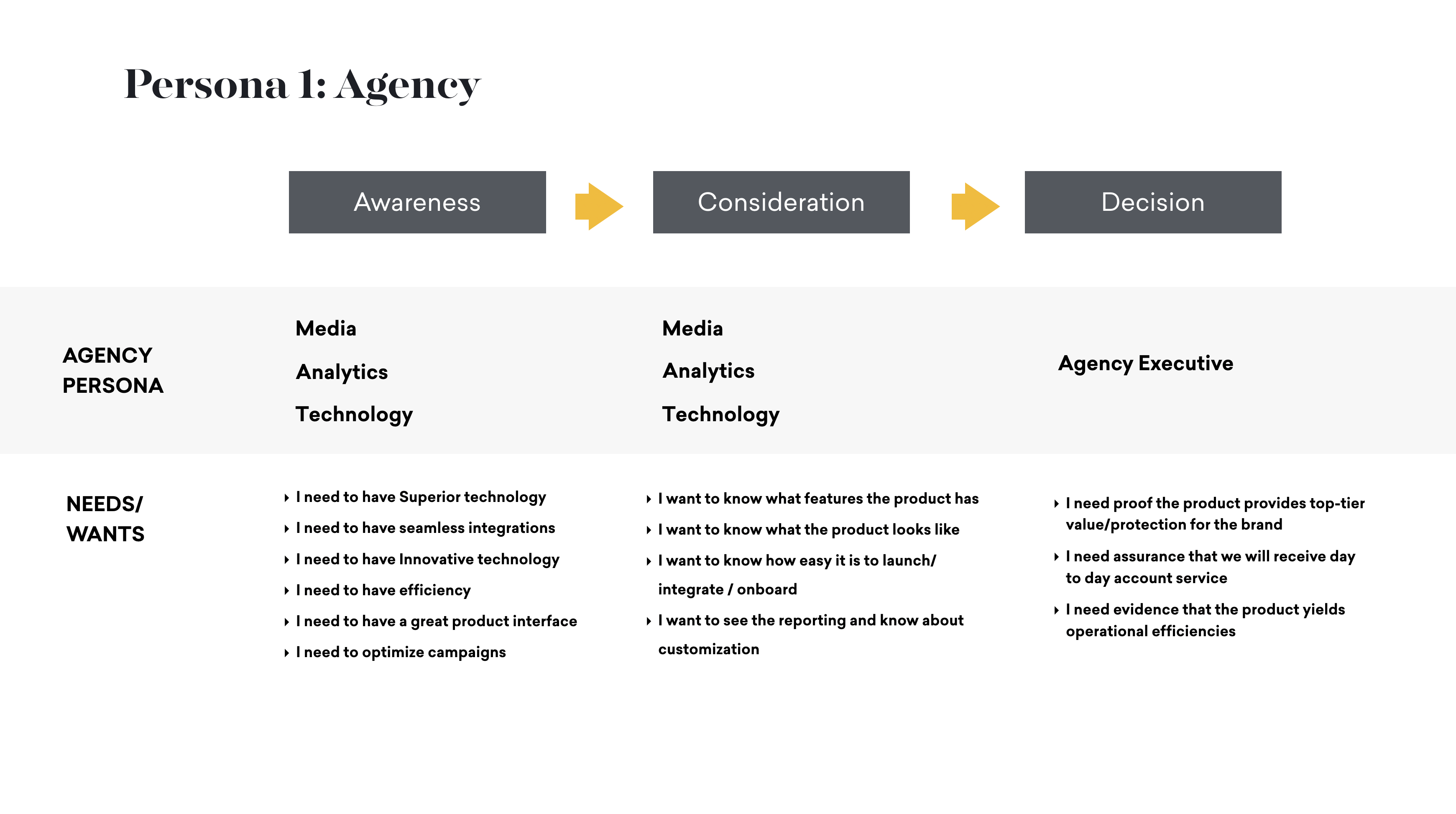
Next, we determine what content types and areas of the website will be catered to each phase of the buyer’s journey. Note that some forms of content can appeal to all three phases.
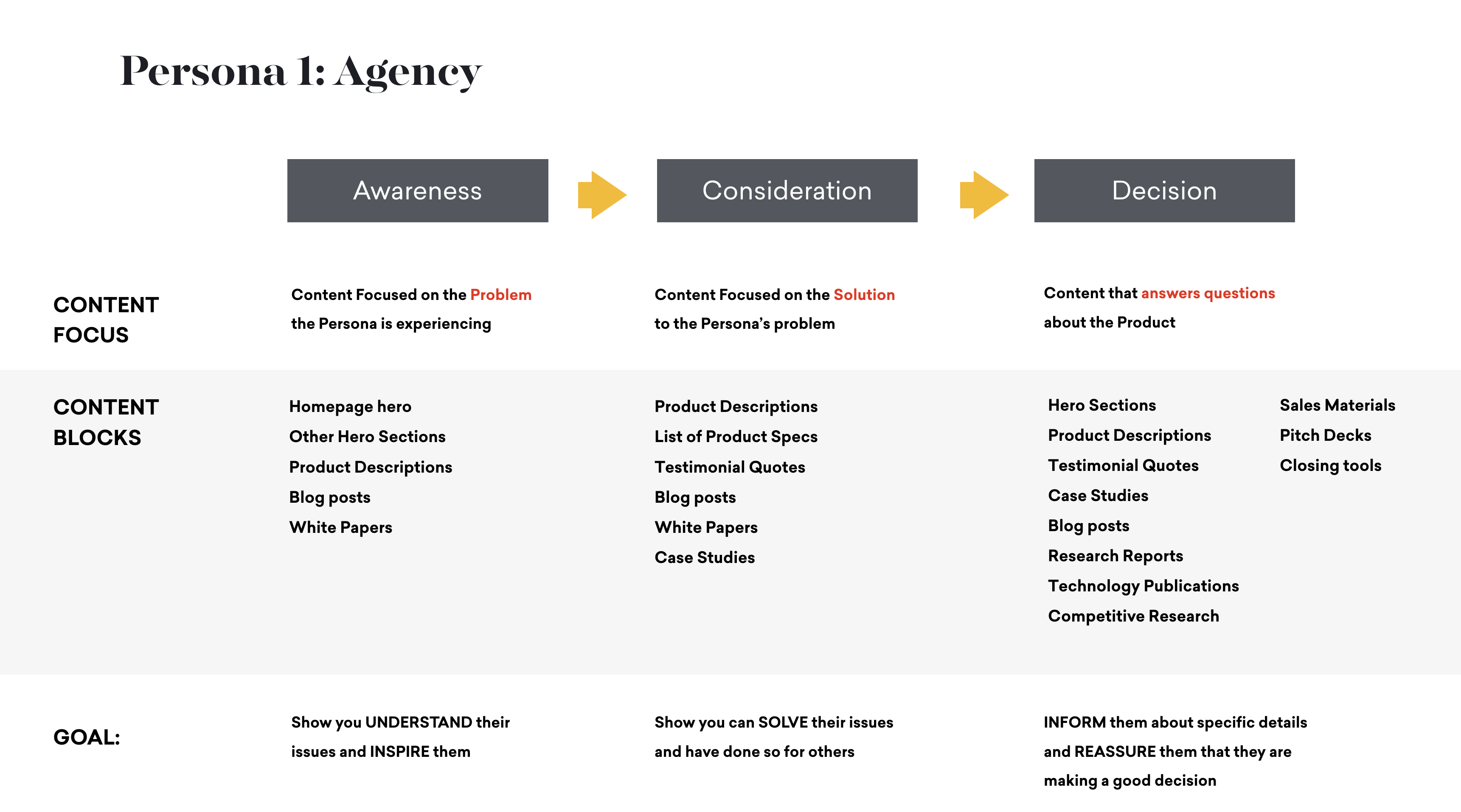
Conclusion
The Buyer’s Journey is a practical framework for building out a brand story with clarity. It breaks the general customer lifecycle into stages, separating the individual needs of the customer along the way. Effective marketing speaks to those needs, answering key questions, and addressing the customer’s most pressing issues so they feel comfortable choosing your products or services to solve their problem.
Keep in mind that the Buyer’s Journey is just a framework—while it’s an effective one, simply separating your customer’s journey into different steps alone won’t turn them into a buyer. Content that resonates with them, however, will. Each phase of the journey requires specific types of content, with different goals. The content must be about the customer—not the company. When you make the customer the hero of the story, you can earn their trust as a buyer, for now, and the future.
If this article helped you, please help us by sharing it or recommending to a friend. Thank you!
